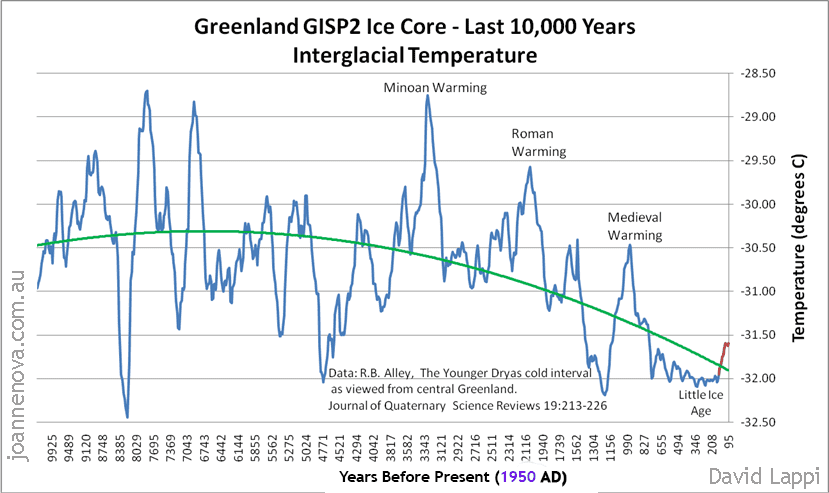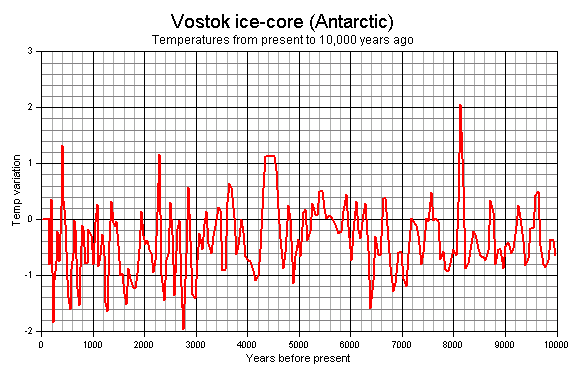Despite increasing confirmation of the Adaptive Bleaching Hypothesis and its ability to explain coral resilience, most people are unaware of its debate within the scientific community. The ability to rapidly adjust to changing environments by modifying their symbiotic partnerships has been the key to their success for millions of years. As one
expert wrote, the “flexibility in coral–algal symbiosis
is likely to be a principal factor underlying the evolutionary success of these organisms”.
Strange...with all that sweetness and light...
I wonder why the
coral reefs are dying then.
Diver surveys based off Cape York, Australia's northeastern tip, found up to 50 percent mortality in the reef from coral bleaching. Death among the organisms that build the reef's structure is most likely linked to rising temperatures in the ocean, the government announced.
Bleaching isn't dying...and if some reefs are dying, it isn't due to what small bit of warming we have seen...corals evolved to live in oceans that are much warmer than they are at present.
But rather than simply accept alarmist claptrap predictions of the future with no notice of the past, lets take a look at the past.
Zerbini et al., 2017
“Our estimated rates for the northern Mediterranean, a relatively small regional sea, are slightly lower than the global mean rate, + 1.7 ± 0.2 mm/year, recently published in the IPCC AR5 (Intergovernmental Panel on Climate Change 5th Assessment Report) … Our regional results, however, are in close agreement with the global mean rate, + 1.2 mm/year, published by Hay et al. (2015) which is currently being discussed by the oceanographic community.”
McAneney et al., 2017
“Global averaged sea-level rise is estimated at about 1.7 ± 0.2 mm year−1 (Rhein
et al. 2013), however, this global average rise ignores any local land movements. Church
et al. (2006) and J. A. Church (2016; personal communication) suggest a long-term average rate of relative (ocean relative to land) sea-level rise of ∼1.3 mm year.”
Wenzel and Schröter, 2014
“Global mean sea level change since 1900 is found to be 1.77 ± 0.38 mm year on average. … [T]he acceleration found for the global mean, +0.0042 ± 0.0092 mm year, is not significant“
Now compare that with sea level increase during the middle holocene period which were in excess of 9mm per year.. Between 6500 and 6800 years ago, sea levels were rising at a rate of 1- 2 METERS greater than the present...that would be because it was much warmer during that time than the present...
How did corals as fragile and delicate as you believe them to be survive such rapid change? If corals are dying due to us, it is because of what we are putting in the water...certainly not due to the relatively minuscule change in climate that we have seen. Considering they survived and thrived during the holocene period, it would seem more likely that the presently small rate of sea level rise is causing stress among corals.
In addition several modern studies have found that falling sea levels are causing great harm to corals.
Eghbert et al., 2017
“In September 2015, altimetry data show that sea level was at its lowest in the past 12 years [Indonesia], affecting corals living in the bathymetric range exposed to unusual emersion. In March 2016, Bunaken Island (North Sulawesi) displayed up to 85% mortality on reef flats dominated by
Porites, Heliopora and
Goniastrea corals with differential mortality rates by coral genus.”
“[R]apid sea level fall could be more important in the dynamics and resilience of Indonesian reef flat communities than previously thought. This study reports coral mortality in Indonesia after an El Niño-induced sea level fall. The fact that sea level fall, or extremely low tides, induces coral mortality is not new, but this study demonstrates that through rapid sea level fall, the 2015–2016 El Niño has impacted Indonesian shallow coral reefs well before high sea surface temperature could trigger any coral bleaching. Sea level fall appears as a major mortality factor for Bunaken Island in North Sulawesi, and altimetry suggests similar impact throughout Indonesia.”
Dechnik et al., 2017
“
t is generally accepted that relative sea level reached a maximum of 1–1.5 m above present mean sea level (pmsl) by ~7 ka [7,000 years ago] (Lewis et al., 2013).”
“Over the last few decades, the global decline of modern reefs has been linked to environmental and climatic changes in response to anthropogenic activities. However, recent geological and ecological research on fossil reefs in the Great Barrier Reef (GBR) and wider Indo-Pacific identified intervals of significant reef ‘turn-off’ in response to natural environmental forces earlier in their development during the mid- to late Holocene.”
“Increased upwelling, turbidity and cyclone activity in response to increased sea-surface temperature (SST’s), precipitation and El-Nino Southern Oscillation variability have been ruled out as possible mechanisms of reef turn-off for the mid-outer platform reefs. Rather, a fall (~0.5 m) in relative sea level at 4–3.5 ka is the most likely explanation for why reefs in the northern and southern regions turned off during this time.”
“Similar hiatuses in Holocene reef growth were identified in Japan from about 5.9 to 5.8 ka, 4.4 to 4.0 ka and from 3.3 to 3.2 ka. They were attributed to oscillating sea level and relatively cold sea-surface temperatures.”
Meltzner et al., 2017
“Half-metre sea-level fluctuations on centennial timescales from mid-Holocene corals of Southeast Asia … RSL [relative sea level] history between 6850 and 6500 cal years BP that includes two 0.6 m fluctuations, with rates of RSL change reaching 13±4 mm per year.”
“Here RSL rose to an initial peak of +1.9 m [above present] at 6,720 cal years BP, then fell rapidly to a lowstand of +1.3 m, remaining at about that level for ∼100 years, before rising to a second peak at +1.7 m shortly after 6,550 cal years BP. Around 6,480 cal years BP, RSL appears to have fallen again to +1.3 m before rising to a third peak at +1.6 m or higher. … The peak rate of RSL rise, averaged over a 20-year running time window over the period of study (∼6,850–6,500 cal years BP), is +9.6±4.2 mm per year (2σ); the peak rate of RSL fall is −12.6±4.2 mm per year.”
“The central dome of each microatoll grew during a period when RSL was high; RSL then fell rapidly, killing the upper portions of the corals; RSL then stabilized at a lower elevation, forming a series of low concentric annuli ∼0.6 m higher than present-day analogues; RSL [relative sea level] then rose ∼0.6 m in less than a century, allowing the coral to grow upward to 1.2 m higher than modern living corals.”
More and more papers are coming out questioning "consensus" climate science. The ridiculousness of it has become simply unsupportable...everything being due to climate change, and all climate change being due to us with our paltry contribution to atmospheric CO2 is just plain stupid...CO2 as a climate driver simply does not pass the smell test because in the past, ice ages have begun with atmospheric CO2 levels above 1000ppm...modern CO2 is not magic...it is the same stuff that has always been around and it didn't cause climate change back then and it isn't causing climate change now...CO2 follows temperature...it does not drive it.


